Abstract
After an outbreak of peritoneal infections attributed to intrinsic contamination of a poloxamer-iodine solution with Pseudomonas aeruginosa, the manufacturer of the contaminated solution permitted investigation and sampling of materials within the plant. Pseudomonas spp. were recovered from two different unopened lots of solution and from numerous water samples obtained at the plant. The isolates from water identical to those of an isolate recovered from Prepodyne solution (West-Agro Chemical Co., Inc., Westwood, Kans., manufactured for AMSCO Medical Products Div., Erie, Pa.) manufactured 1 month earlier at the same plant. P. aeruginosa was not recovered from incoming city water. P. aeruginosa was recovered from sterile water and poloxamer-iodine after 48 h of incubation in a plant polyvinyl chloride pipe. Scanning electron micrographs of polyvinyl chloride pipe used in the plant showed massive concentrations of rod-shaped and coccobacillary cells apparently embedded in interior deposits of the pipe. Manufacturers of iodophors should be aware that pipes or other surfaces colonized with bacteria may be a source of contamination of their products.
Full text
PDF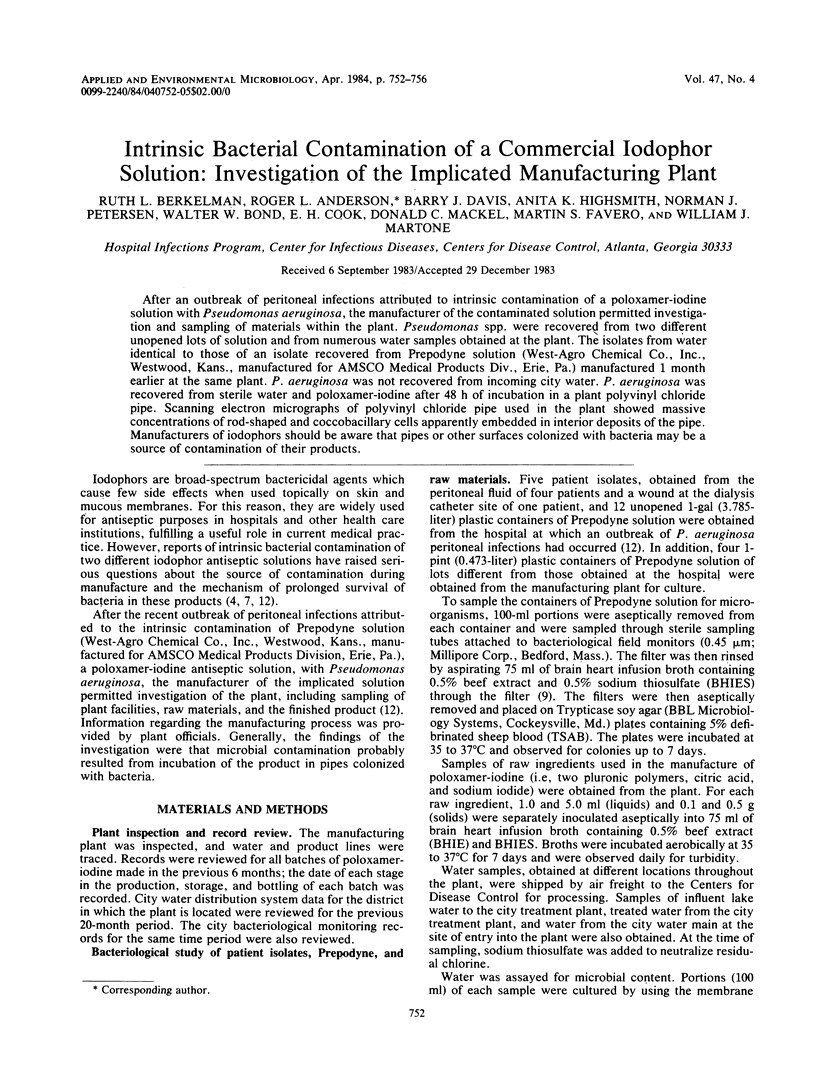
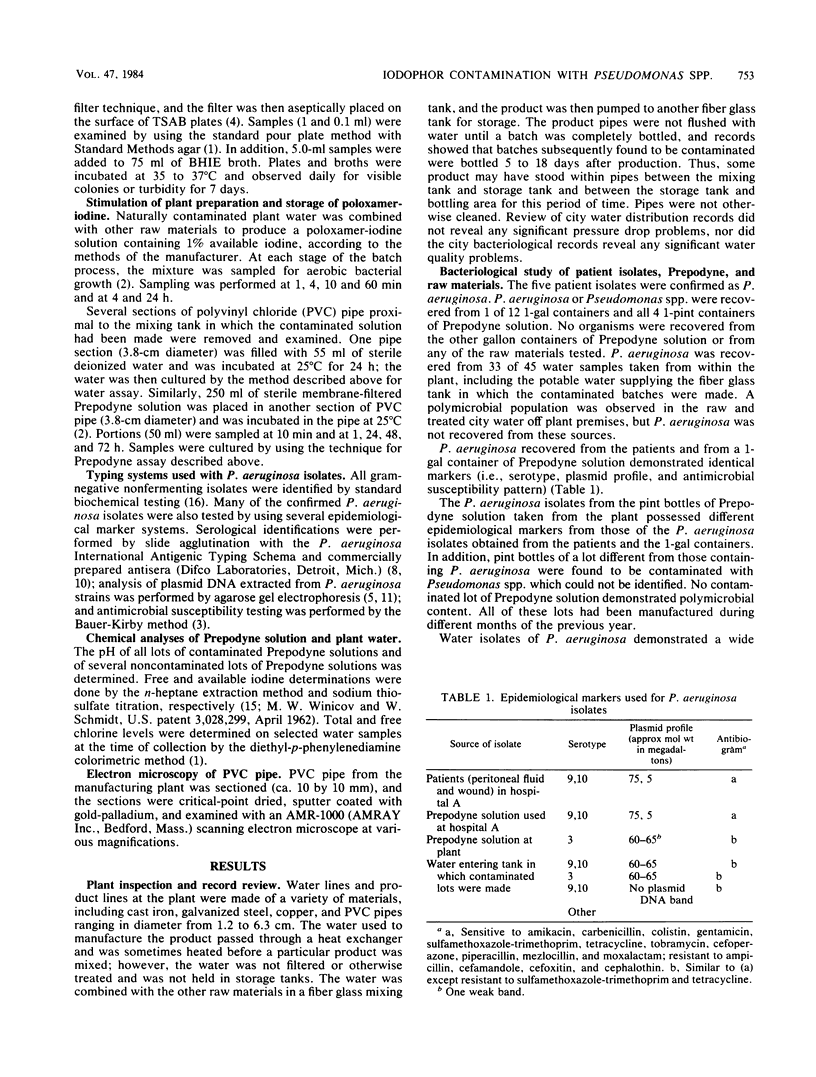
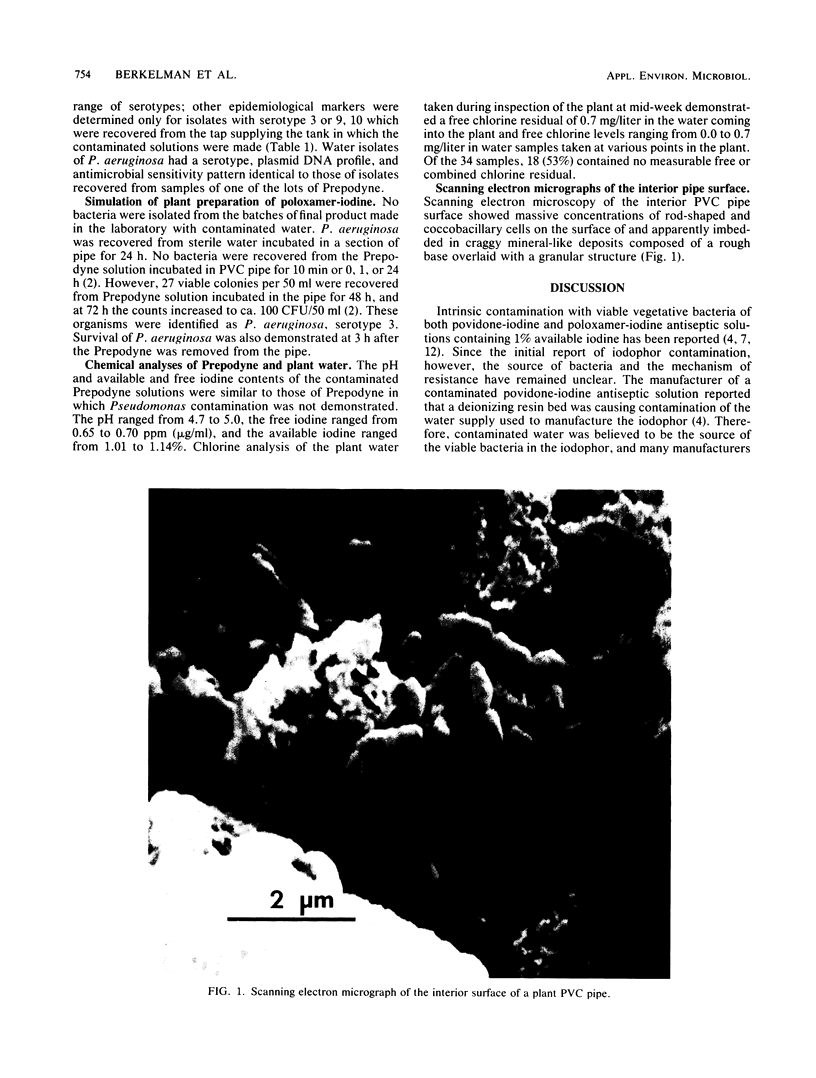
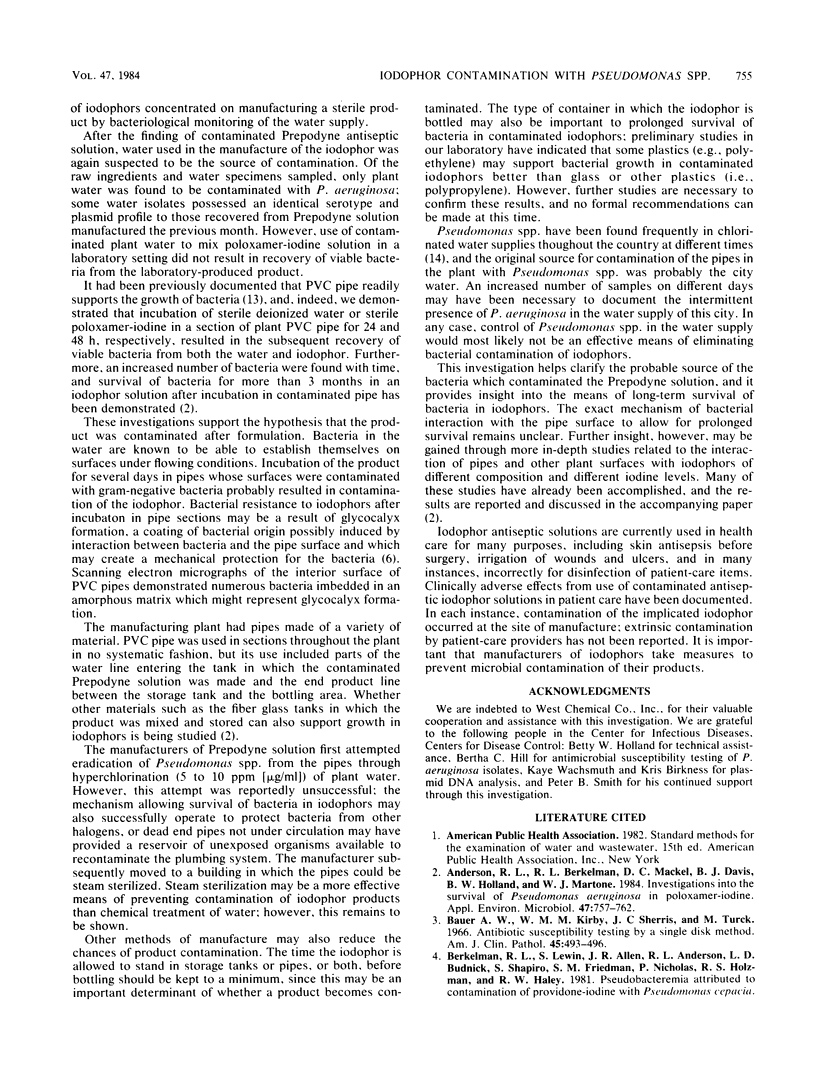
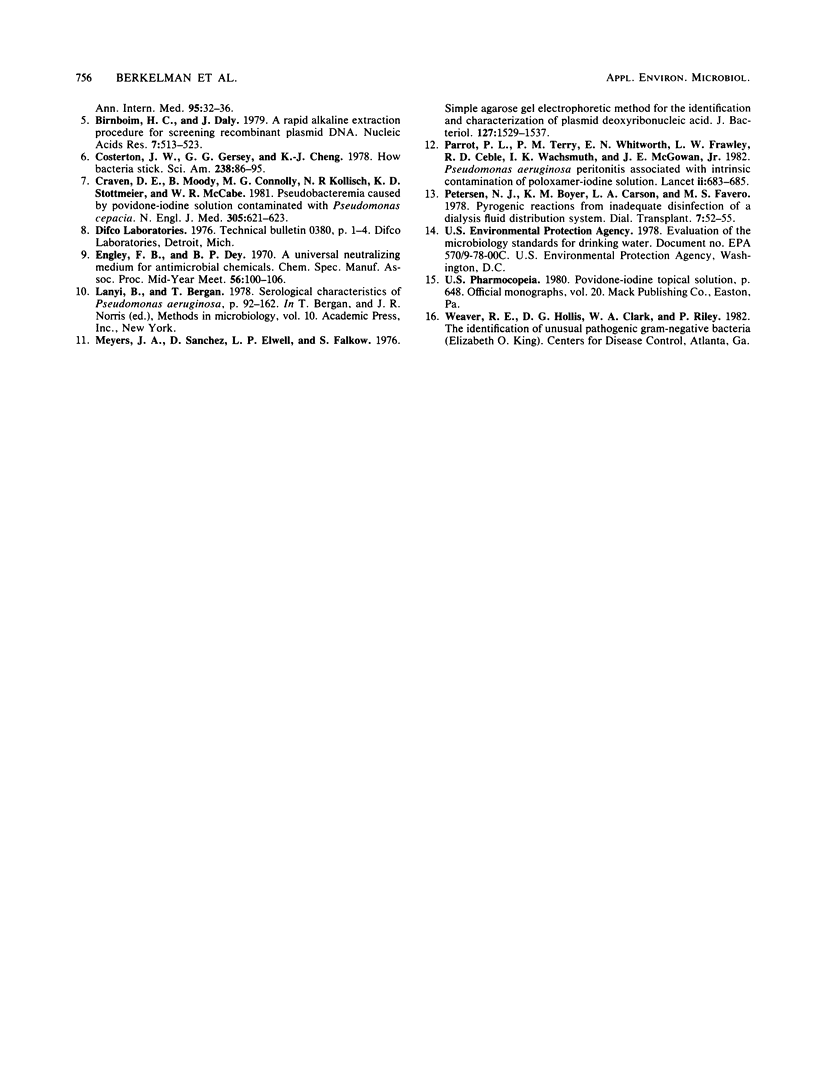
Images in this article
Selected References
These references are in PubMed. This may not be the complete list of references from this article.
- Anderson R. L., Berkelman R. L., Mackel D. C., Davis B. J., Holland B. W., Martone W. J. Investigations into the survival of Pseudomonas aeruginosa in poloxamer-iodine. Appl Environ Microbiol. 1984 Apr;47(4):757–762. doi: 10.1128/aem.47.4.757-762.1984. [DOI] [PMC free article] [PubMed] [Google Scholar]
- Bauer A. W., Kirby W. M., Sherris J. C., Turck M. Antibiotic susceptibility testing by a standardized single disk method. Am J Clin Pathol. 1966 Apr;45(4):493–496. [PubMed] [Google Scholar]
- Costerton J. W., Geesey G. G., Cheng K. J. How bacteria stick. Sci Am. 1978 Jan;238(1):86–95. doi: 10.1038/scientificamerican0178-86. [DOI] [PubMed] [Google Scholar]
- Craven D. E., Moody B., Connolly M. G., Kollisch N. R., Stottmeier K. D., McCabe W. R. Pseudobacteremia caused by povidone-iodine solution contaminated with Pseudomonas cepacia. N Engl J Med. 1981 Sep 10;305(11):621–623. doi: 10.1056/NEJM198109103051106. [DOI] [PubMed] [Google Scholar]
- Meyers J. A., Sanchez D., Elwell L. P., Falkow S. Simple agarose gel electrophoretic method for the identification and characterization of plasmid deoxyribonucleic acid. J Bacteriol. 1976 Sep;127(3):1529–1537. doi: 10.1128/jb.127.3.1529-1537.1976. [DOI] [PMC free article] [PubMed] [Google Scholar]
- Parrott P. L., Terry P. M., Whitworth E. N., Frawley L. W., Coble R. S., Wachsmuth I. K., McGowan J. E., Jr Pseudomonas aeruginosa peritonitis associated with contaminated poloxamer-iodine solution. Lancet. 1982 Sep 25;2(8300):683–685. doi: 10.1016/s0140-6736(82)90712-7. [DOI] [PubMed] [Google Scholar]



